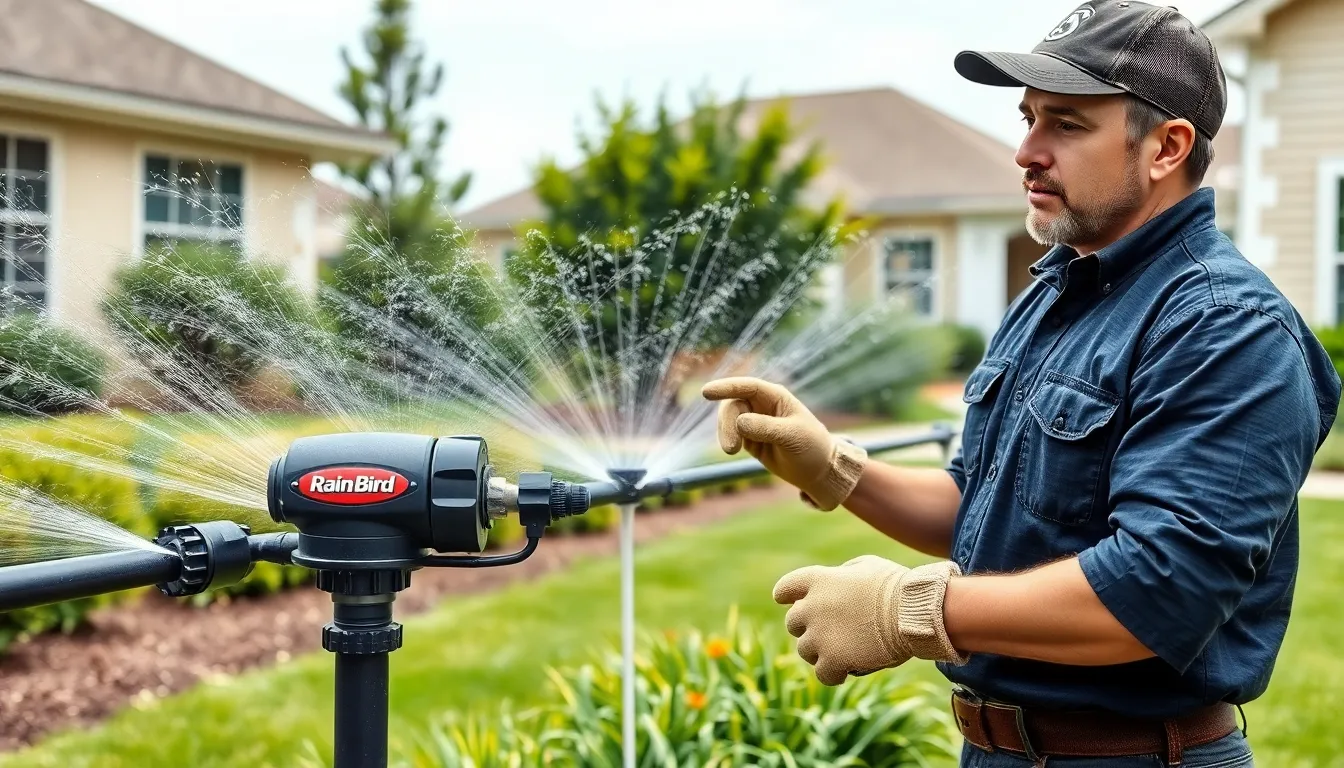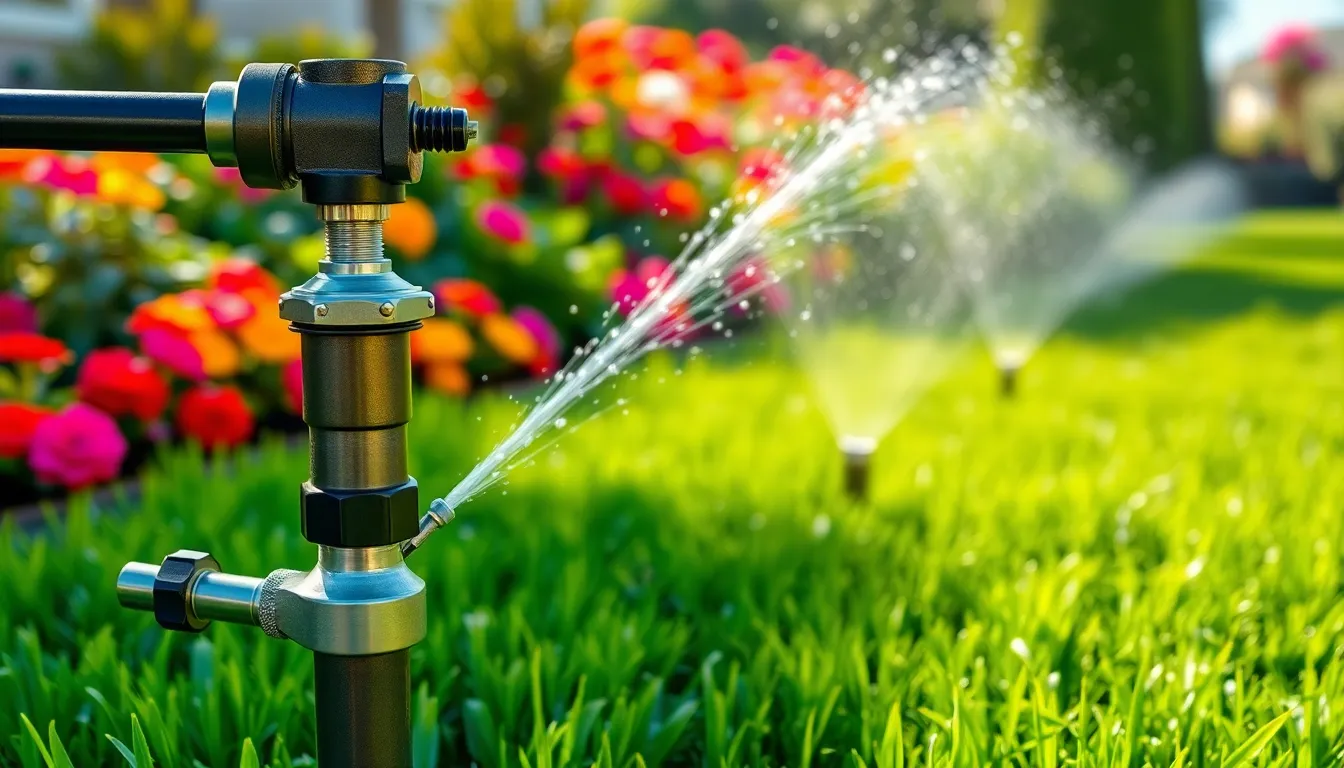Imagine a world where your lawn is the envy of the neighborhood, lush and green without lifting a finger. With a Rain Bird sprinkler system, that dream can become a reality. But even the best systems need a little guidance to work their magic. That’s where the Rain Bird sprinkler system manual PDF comes in, your secret weapon for lawn perfection.
Table of Contents
ToggleOverview of Rain Bird Sprinkler System
Rain Bird sprinkler systems provide efficient irrigation solutions for maintaining healthy lawns and gardens. These systems feature advanced technologies that contribute to water conservation and optimized performance.
Features and Benefits
Rain Bird systems include adjustable spray patterns, allowing for precise watering according to specific landscape needs. Efficiency is enhanced through their smart irrigation controllers, which adapt to weather conditions. Durability is another advantage, as the components resist corrosion and ensure long-lasting performance. Users notice reduced water bills due to optimized usage. Overall, these features contribute to a lush lawn while promoting environmental sustainability.
Common Models and Their Uses
Rain Bird offers several popular models, each designed for different applications. The 1800 Series is a favorite for residential lawns, providing customizable coverage with various nozzle options. For larger areas, the ESP-Me Series is preferred, integrating smart technology to schedule watering efficiently. The SST Series is effective for commercial properties, boasting advanced water-saving features. Selecting the right model ensures optimal performance tailored to specific landscaping needs.
Accessing the Rain Bird Sprinkler System Manual PDF

Users can easily access the Rain Bird sprinkler system manual PDF for guidance and maintenance. This manual provides essential information for optimal system performance.
Downloading the Manual
Downloading the manual is straightforward. Visit the official Rain Bird website to locate the support section. Users typically find a dedicated link for product manuals. Click on the appropriate link for the specific sprinkler system model. A PDF download will begin automatically, making it accessible on various devices. Saving the document allows quick access for future reference. Ensure the device used has adequate storage capacity to facilitate smooth downloading.
Navigating the PDF Format
Navigating the PDF format enhances user experience. Users can utilize the table of contents for easy access to specific sections. Features like bookmarks provide direct links to essential topics. Additionally, search functions allow users to quickly locate keywords or phrases. Printing selected pages offers a physical reference for on-site use. The manual’s clear layout highlights key features and troubleshooting tips, ensuring efficient usage of the Rain Bird system. Users benefit from a well-organized document that simplifies maintenance and setup processes.
Key Components of the Rain Bird Sprinkler System
Understanding the key components of the Rain Bird sprinkler system aids in effective lawn care. Each element plays a crucial role in ensuring efficient water distribution.
Sprinkler Heads
Sprinkler heads serve as the primary mechanism for delivering water. Various types include spray heads and rotor heads, each designed for specific watering needs. Adjustable settings enhance customization, allowing for tailored spray patterns suitable for different landscapes. Popular models like the 1800 Series feature pop-up functionality, minimizing visibility when not in use. Furthermore, each head operates effectively under various pressure levels, supporting both small and large areas. Maintaining these components ensures consistent performance, contributing to overall lawn health.
Controllers and Timers
Controllers and timers manage the watering schedule of the system. Smart controllers, such as the ESP-Me Series, adapt based on weather conditions, preventing overwatering. By integrating rain sensors, these devices further optimize water usage, promoting sustainability. Easy programming options simplify user interactions, making it accessible for various users. Timers help set specific watering durations, ensuring efficient water application during essential growth periods. Using these tools effectively maximizes water conservation while promoting a lush green lawn.
Installation Guidelines
Installation of a Rain Bird sprinkler system involves critical steps for effective irrigation. Proper planning and adherence to guidelines ensure optimal performance.
Site Assessment
First, evaluate the lawn and garden area. Measuring the dimensions of the space helps in determining the number of sprinkler heads required. Assessing sunlight exposure allows for identifying shaded zones, which may need different watering strategies. Checking the soil type influences the watering frequency and technique. Additionally, considering the proximity to water sources facilitates easier connections. Recognizing existing landscaping features ensures no plants or structures interfere with watering patterns.
Setting Up the System
Begin by marking the proposed locations for sprinkler heads. Using a garden hose can help visualize the layout. Following that, connect the main water supply to the system according to the manual specifications. Installing a backflow preventer is essential to protect the water source. Then, lay the pipes underground, ensuring proper depth to avoid damage and maintain insulation. Next, attach the sprinkler heads securely and adjust them to the desired spray settings. Manual testing of the system confirms adequate coverage and uncovers any necessary adjustments before finalizing the installation.
Maintenance and Troubleshooting
Maintaining your Rain Bird sprinkler system ensures optimal performance and prevents common issues. Regular attention keeps lawns healthy and irrigation efficient.
Regular Maintenance Tips
Check sprinkler heads for dirt and debris monthly. Clean the filters to maintain proper water flow. Inspect hoses and fittings for leaks, replacing damaged components immediately. Ensure the system operates correctly by running it periodically, especially after seasonal changes. Adjust spray patterns as needed to prevent overspray on sidewalks or driveways. Scheduling seasonal checks helps identify potential problems early.
Common Issues and Solutions
Water pressure problems often arise, causing inadequate watering. Adjust the pressure regulator if sprinklers operate weakly or erratically. Clogs may prevent uniform distribution; if water flow is uneven, check sprinkler heads for blockages. Broken sprinkler heads can result in flooding; replace any that show signs of damage. Rain sensors may also malfunction, leading to overwatering—inspect and recalibrate them as necessary. Addressing these issues promptly ensures a lush lawn and extends the system’s lifespan.
Utilizing a Rain Bird sprinkler system can transform any lawn into a lush oasis with minimal effort. The Rain Bird sprinkler system manual PDF serves as an invaluable resource for users seeking to maximize their system’s performance. With its user-friendly format and comprehensive guidance on installation and maintenance, it empowers homeowners and professionals alike to achieve their landscaping goals.
Regular maintenance and troubleshooting tips included in the manual ensure the system operates efficiently, prolonging its lifespan and enhancing its effectiveness. By following the outlined best practices and utilizing the advanced features of Rain Bird systems, users can enjoy a beautiful and sustainable landscape while conserving water. Accessing the manual is a simple step towards achieving a thriving outdoor space.













